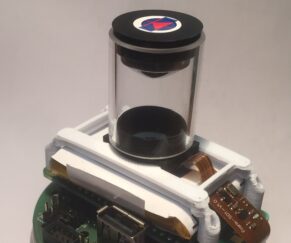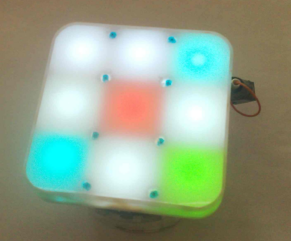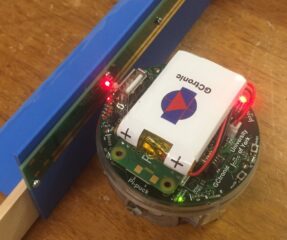e-puck 2
The e-puck robot has been a cornerstone in robotics education and research since its debut in 2005. To date, over 6,000 units have been utilised in various academic and research settings. In January 2018, we introduced e-puck version 2, which offers numerous enhancements while maintaining compatibility with most existing setups.
The new e-puck 2 retains the familiar shape and mechanics of its predecessor but is equipped with a more powerful controller, USB connectivity, a time-of-flight sensor, and WiFi capabilities, among other improvements. These features enhance its functionality and adaptability, making it an even more valuable tool in both educational and research environments.




Features:
- Microcontroller - STM32F4 at 168MHz (210 DMIPS), FPU and DSP core for signal processing
- Sensors - 8 proximity and ambient light, 1 distance sensor, 3D IMU, 4 omni-directional microphones, VGA color camera, IR receiver for remote control
- Outputs - 4 red LEDs, 4 RGB LEDs, green body light, 1 strong red LED in front, speaker (WAV files)
- Communication - USB Full-speed, Bluetooth 2.0, BLE, WiFi
- Programming & Debugging - Free C compiler, Webots simulator, onboard debugger (GDB)
- Battery - 1.8 Ah LiIon battery for ~3 hours autonomy
e-puck Extensions
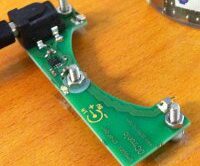
Automatic charger for the e-puck
The robot can be driven autonomously to park in the charger. The 2 spring contacts adapt only to the cliff module.
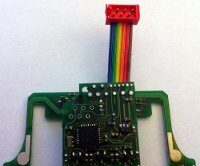
Cliff module
extends the capability of the ground sensor with 2 additional sensors in front of the wheels. E-puck can now detect the end of the table and react.

e-puck Arduino set
Mechanical support and connector cable soldered to an Arduino Uno board (included)

Motor: e-puck motor
Gear 1:50

Reflective strip for e-puck mutual detection

one e-puck extra battery

High-speed charger for 1
e-puck battery.
It takes about 1h20-1h50 depending on battery discharge state. The standard charger takes up to 3 hours for a complete charge.
Pi-puck
Features:
- Raspberry Pi Zero W or Zero 2 W connected to the robot via I2C
- interface between the robot base camera and the rPi via USB, up to 15 FPS
- 1 digital microphone and 1 speaker
- USB hub connected to the rPi with 2 free ports
- uUSB cable to the rPi uart port. Also ok for charging
- 2 chargers. 1 for the robot battery and 1 for the auxiliary battery on top of the extension
- charging contact points in front for automatic charging. External docking station available
- several extension options. 6 i2C channels, 2 ADC inputs
- several LED to show the status of the rPi and the power/chargers

Omni-vision Module V3
Features:
- 5Mpixel color camera looking 360° all around the robot
- compatible with Pi-puck and interfaced with the Raspberry Pi Zero W
- parabolic mirror for uniform pixel distribution
- suitable for basic image processing such as blobs, colours and light detection.
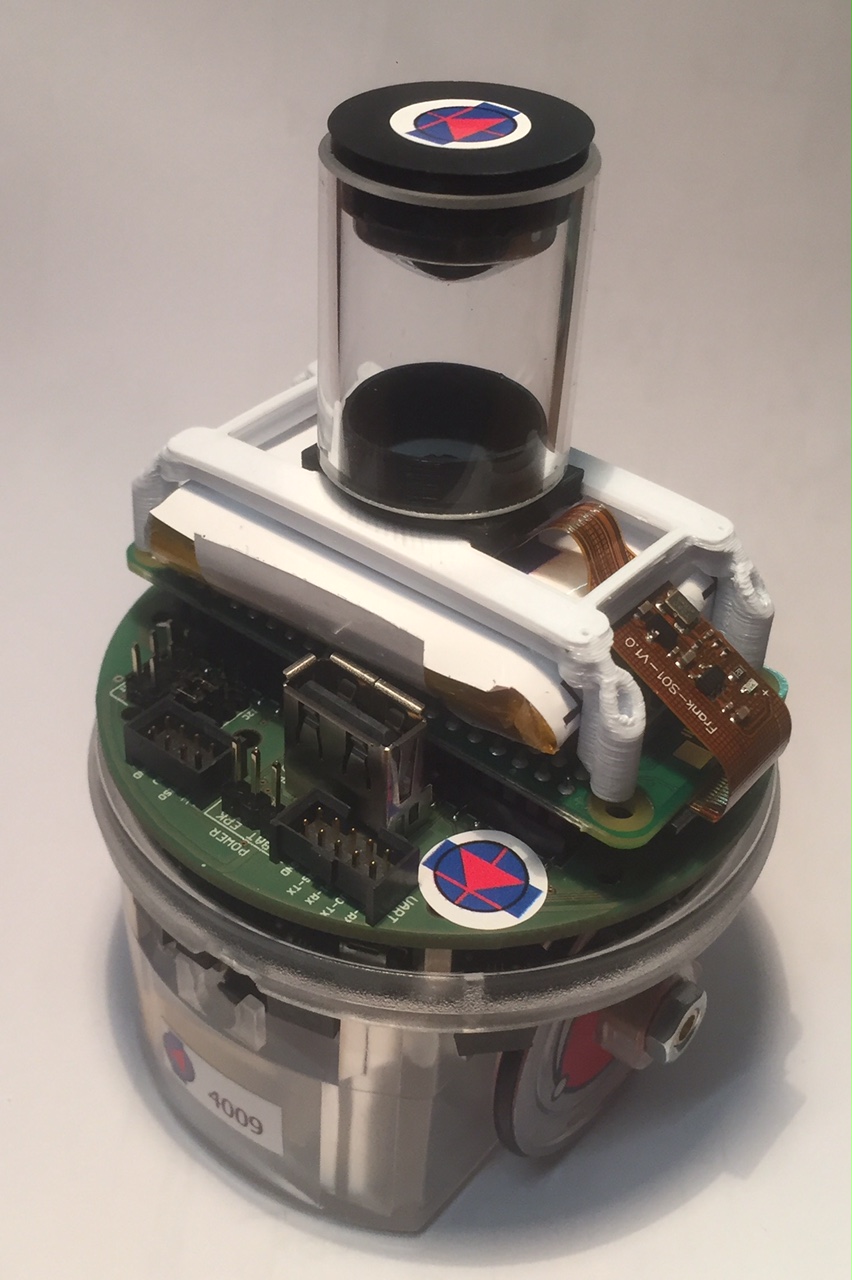
Image unwrapping
Ultra Wide Band extension for Pi-Puck
The Ultra Wide Band extension is connected to the Pi-Puck extension through the extension connector pins (2x10)
3x3 RGB display e-puck extension
The RGB panel is a new module designed to be suitable for the e-puck robot. It is comprised of:
- 9 RGB LEDs
- 8 infrareds
- PIC8F6722 microcontroller
Every LED is independent from each other, so it's possible to turn on the LEDs with different colours in the RGB color space (additive color mixing), as shown in picture.
e-puck range and bearing board
The board allows situated agents to communicate locally, obtaining at the same time both the range and the bearing of the emitter without the need of any centralized control or any external reference. Therefore, the board allows the robots to have an embodied, decentralized and scalable communication system. The system relies on infrared communications with frequency modulation and is composed of two interconnected modules for data and power measurement.





